The Olympic National Park is a curious and beautiful place. The park is massive at 1,370 square miles. The bulk of this is the Olympic Mountains and their famous rainforests.
But on the coast there is a narrow sliver of park. It's 60 miles long and starts almost at the upper northwest corner of the continental US - however it's also only a few miles wide.
This little strip is a different Washington. Parts of it are as close as you can come to finding true wilderness in the lower 48. And the entirety feels unlike anything else in the state: it looks and feels different. It can be 80 degrees and sunny in Seattle (100 miles as the crow flies) while it is foggy and 55 on the coast.
Our family did a 6 day/5 night camping trip and hiked a bit more than half of it. We started at Shi Shi Beach in the north and worked our way down to Rialto Beach. It was incredible! Read on for a trip report.
The Rocks
The Olympic Coast used to be full of rocks that jutted deep out into the ocean. All these rocks were not the same; some were aggregates of smaller rocks while others were soft sandstone and some appeared to be possible remnants of ancient volcanoes.
This meant that they have been eroding at different rates, leaving sea stacks in their wake. As you walk the coast, the sea stacks are your constant companion.
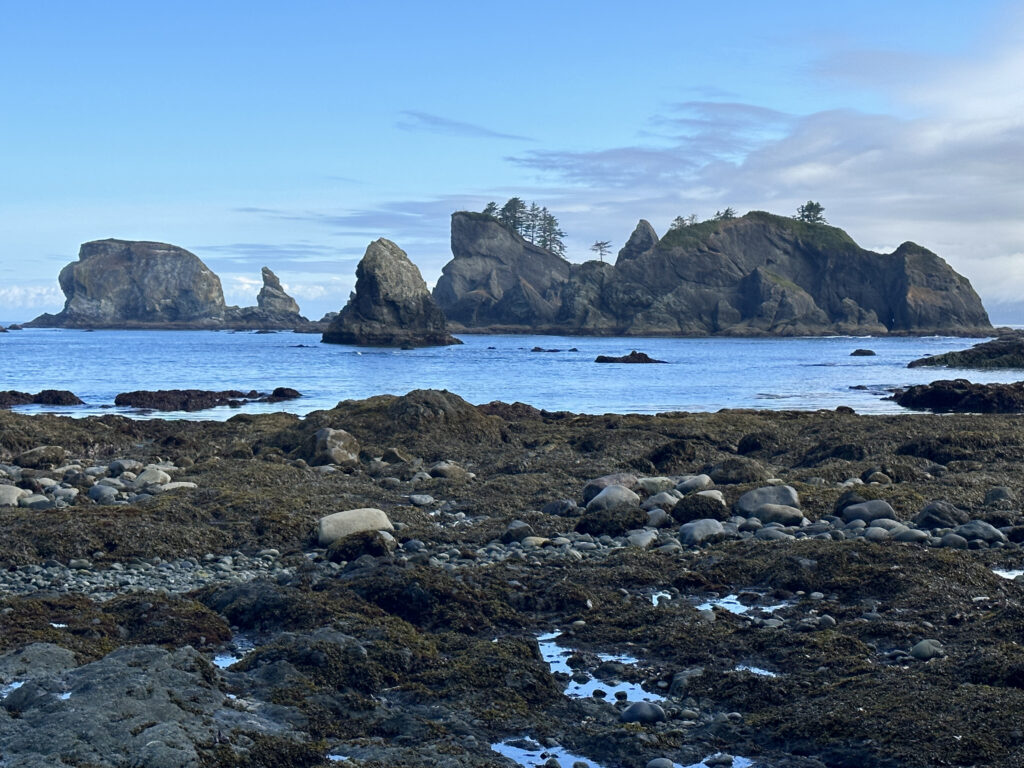
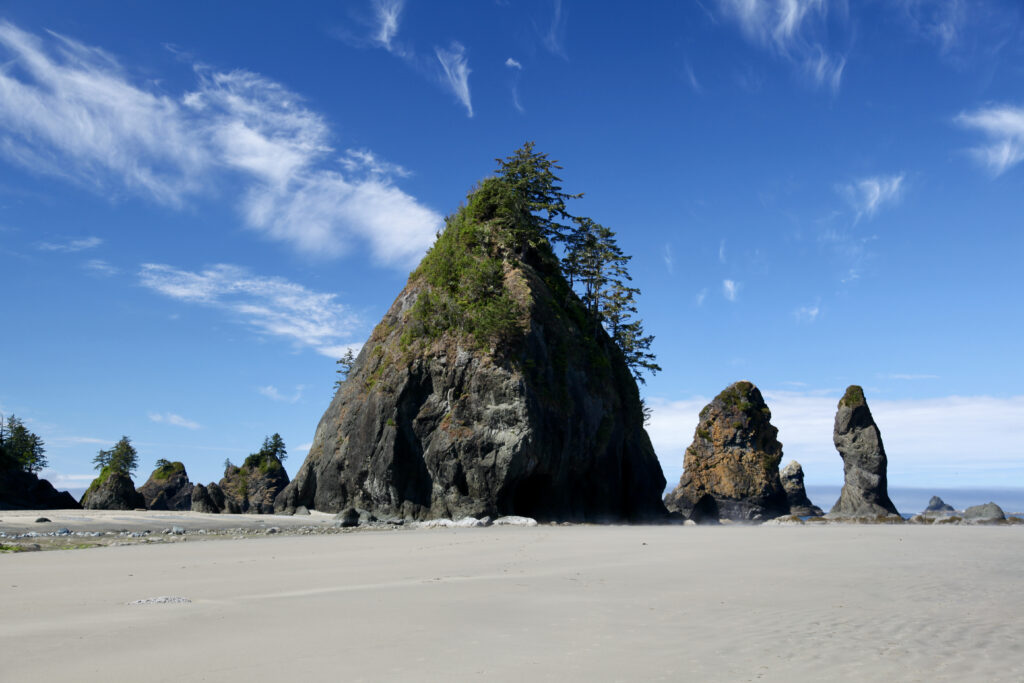
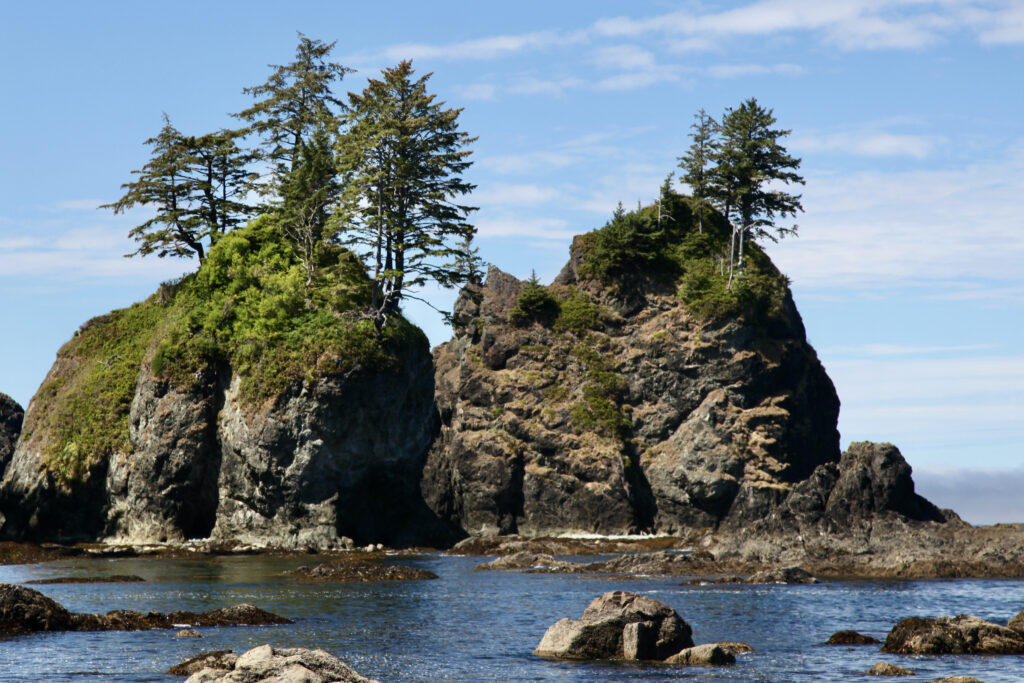

The coast isn't always eroded and sometimes you'll find yourself walking at low tide around sheer rock coated in seaweed.
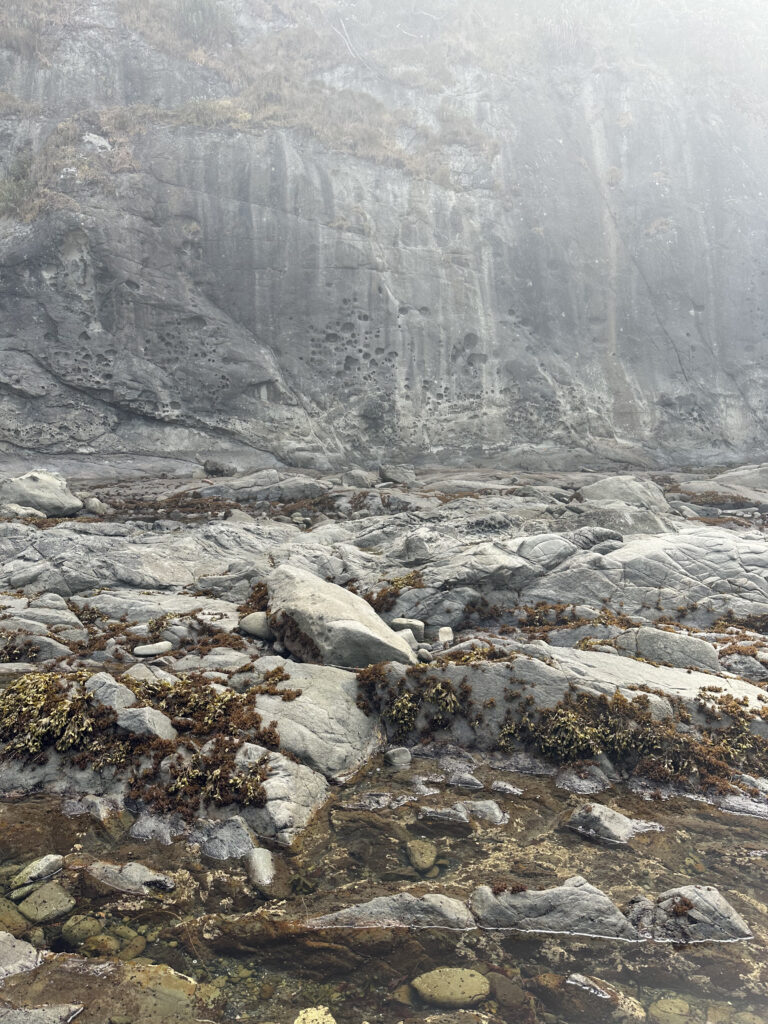
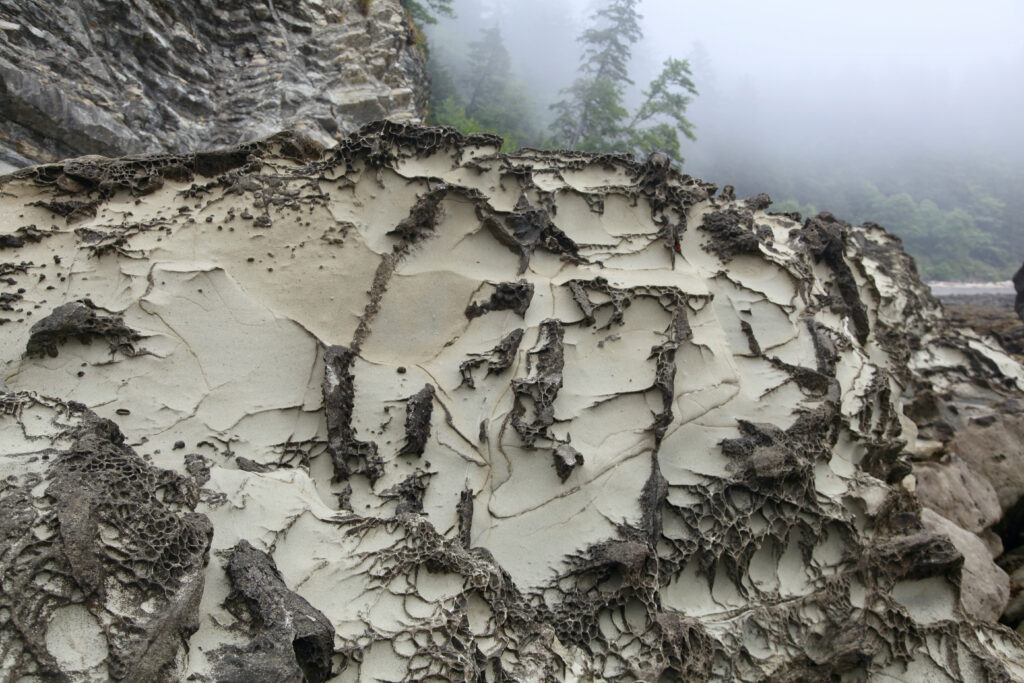
Later you'll find that you can't always go around the rock. Sometimes you need to go through it.
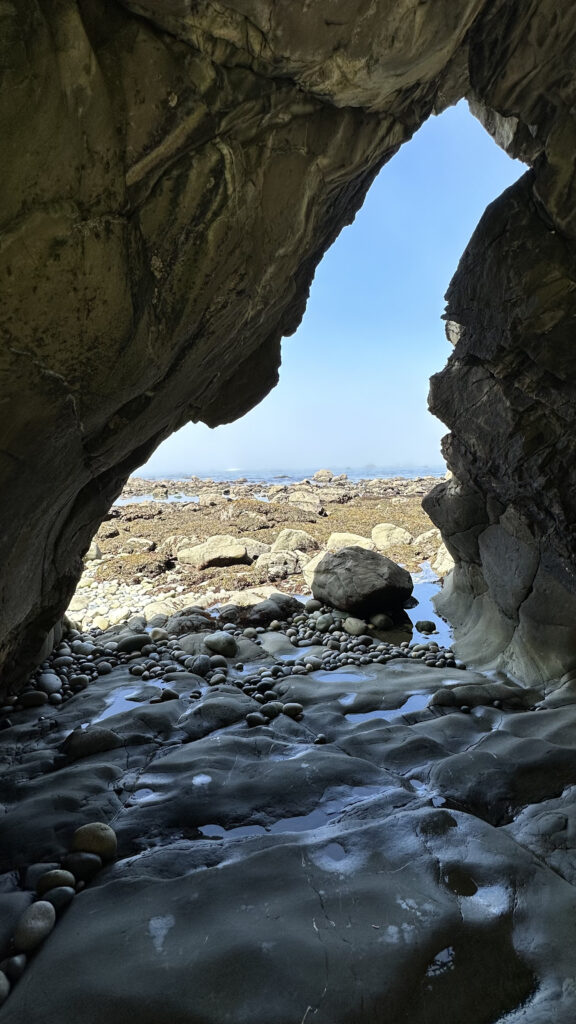

If around or through isn't an option then you have to go over.
At first you may not realize this and you'll find yourself rounding a rock that suddenly cliffs out into an uncrossable path of sea (I speak from experience); head backwards, find the trail and go up and over.
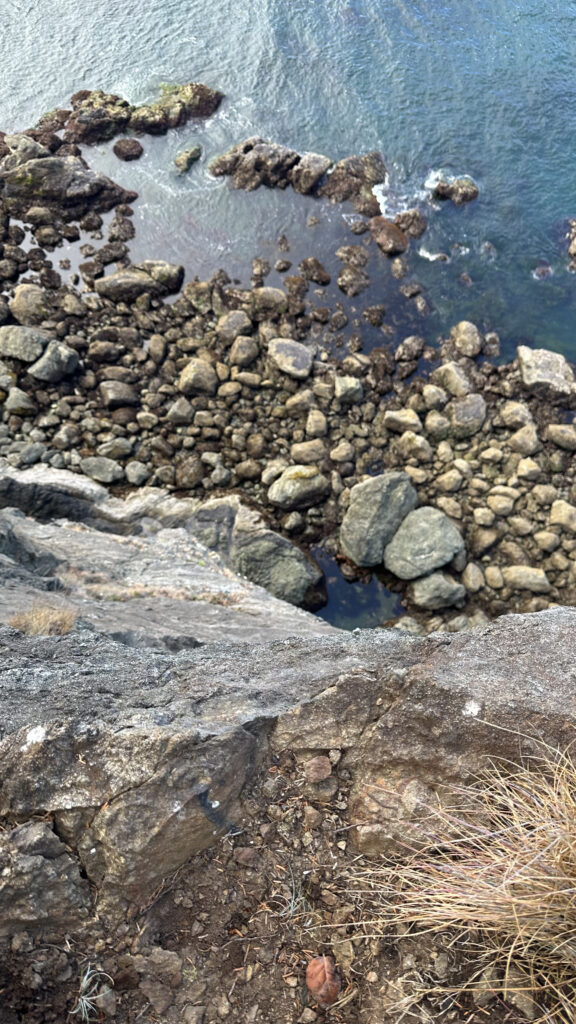
Steep trails lined with hand-destroying ropes will take you up to cliffs with incredible views.

You absolutely need to follow both the map and tide tables on this hike. If the map tells you that a point should never be rounded, it's not a suggestion. Similarly, if a point can only be crossed at low tide, that's really the truth, not the Park Service trying to limit your fun.
The Fog
Your other constant companion is the fog.
It rolls in sometime between late afternoon and night. When you wake up, it envelops everything.
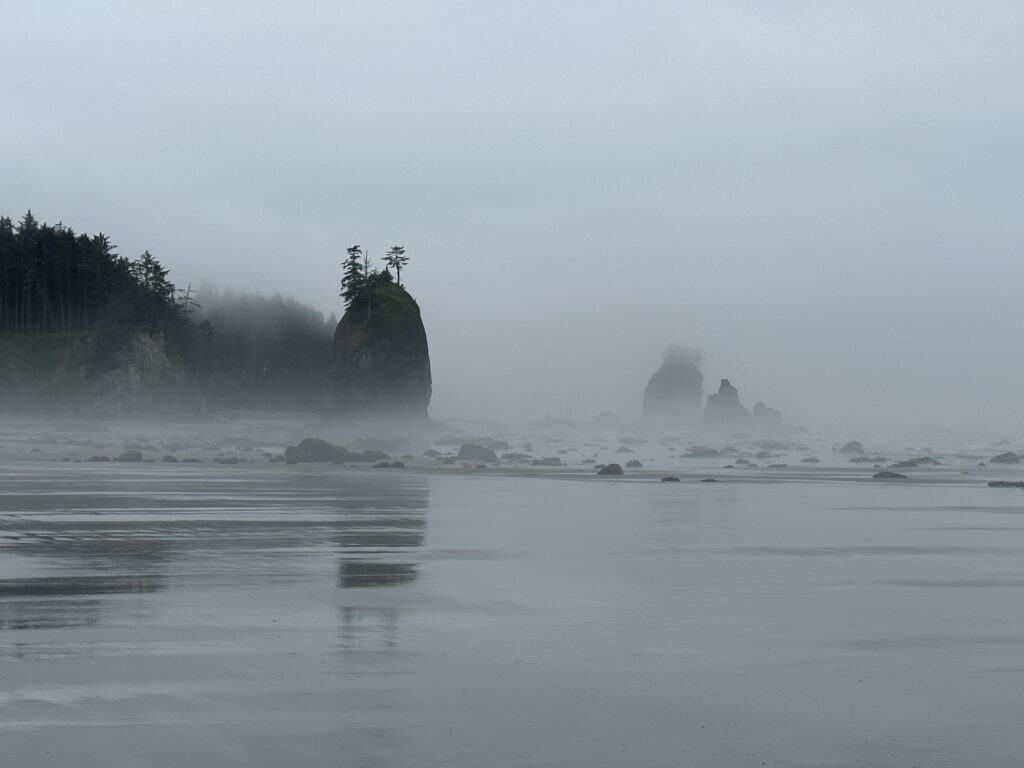
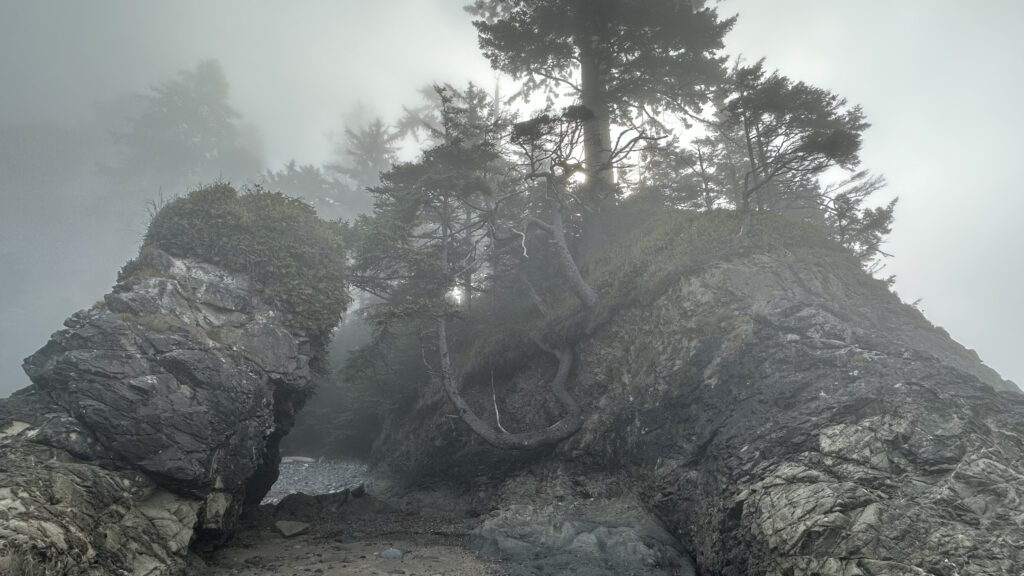

The color is drained out of everything. It's black and white and every shade of grey in-between.
As you walk the coast, sea stacks and islands suddenly loom out in front of you. It's easy to understand why so many ships foundered on the rocks around here (two of the campsites - Norwegian Memorial and Chilean Memorial - are named after former disasters).
But it can't last.
The summer sun slowly begins to burn off the fog and it begins to lift.
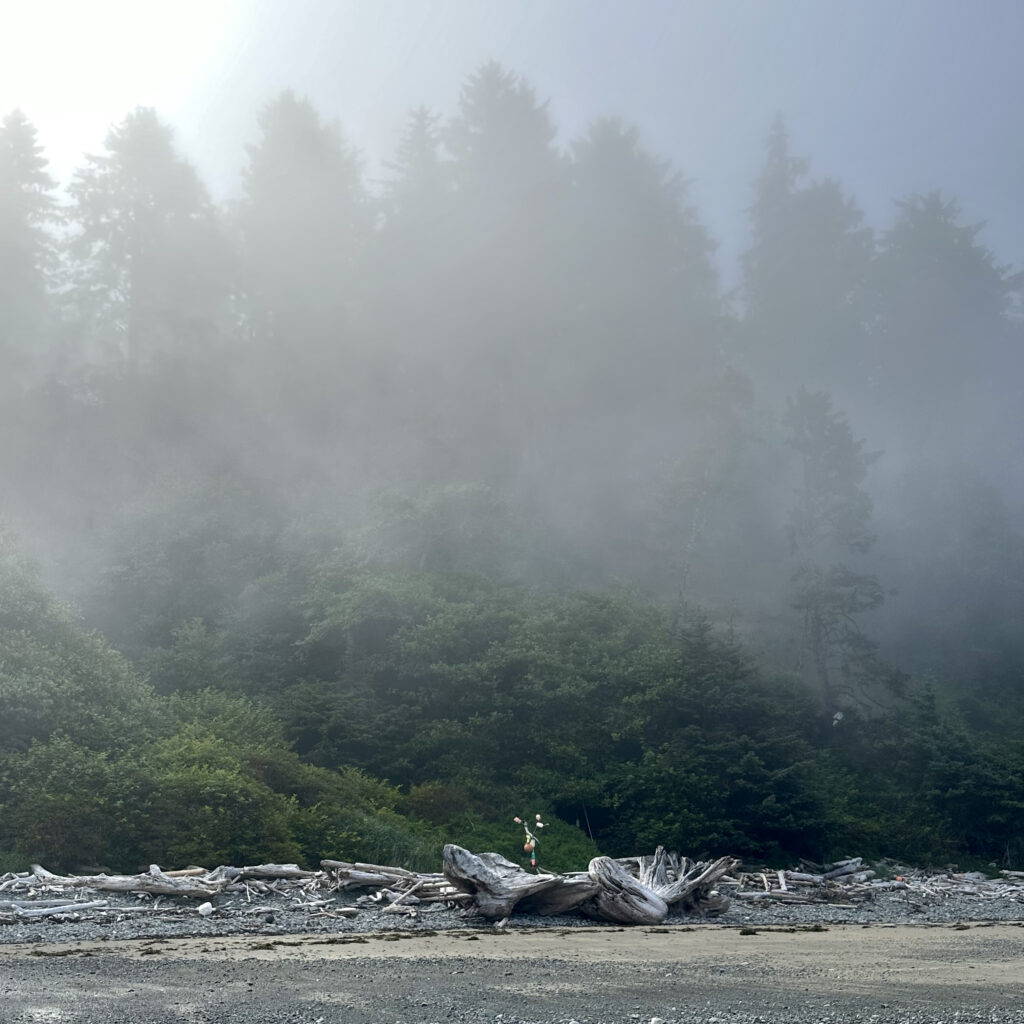
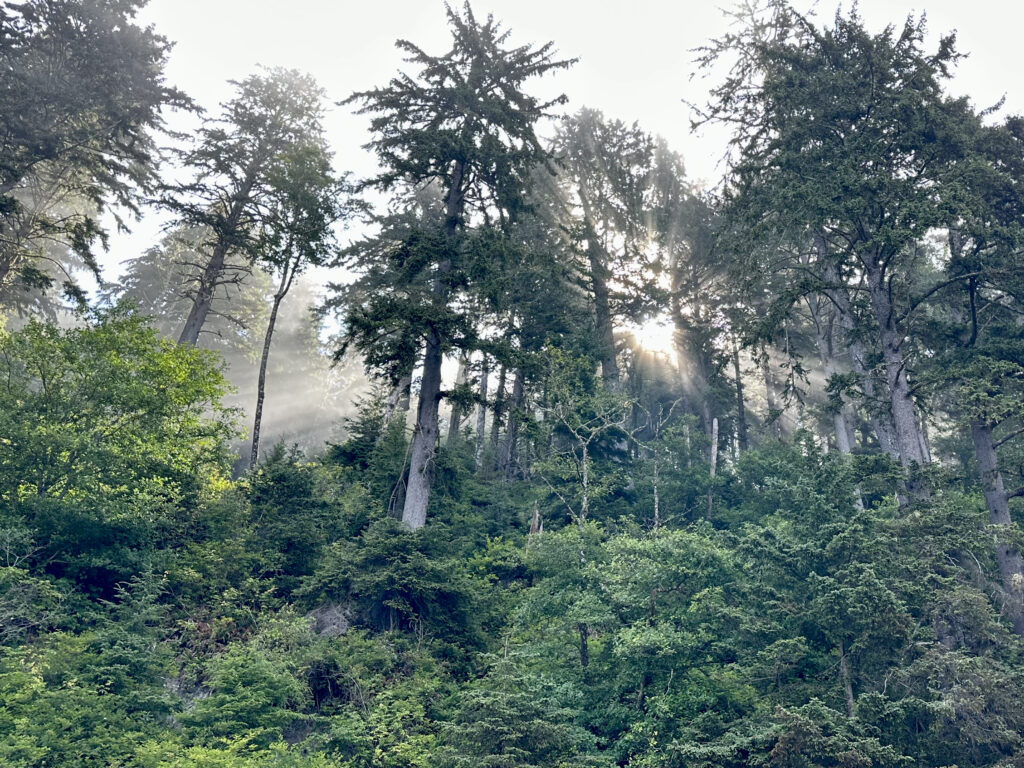
At some point around noon you'll find yourself walking in sun.
One consequence of the fog is that the coast is lush and thick even in a rainless summer.
Water collects on everything.
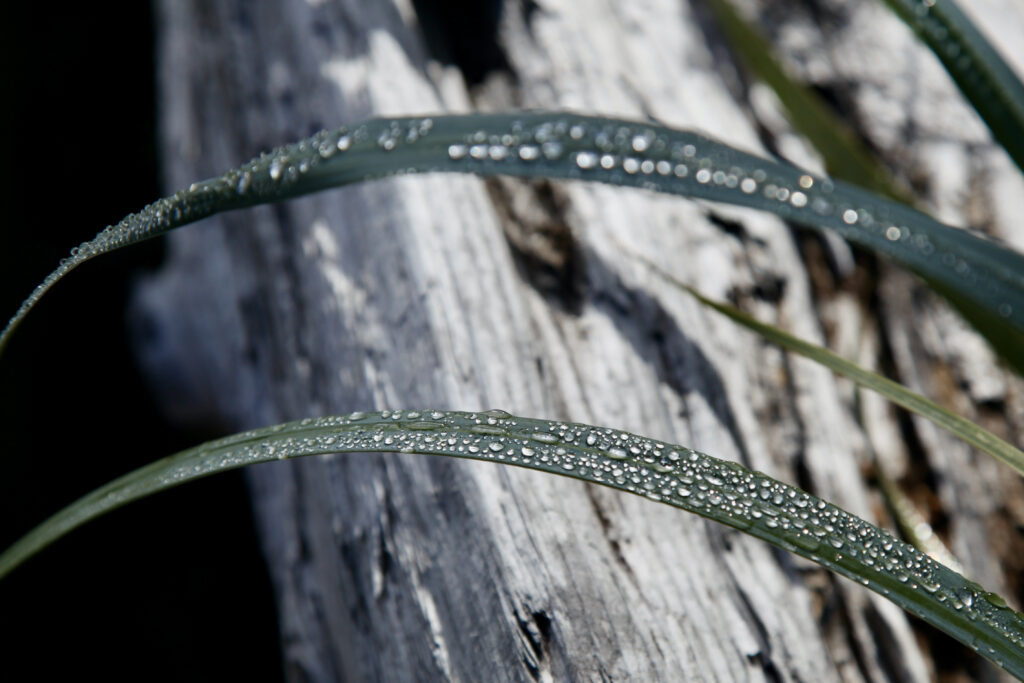
Tree needles catch the fog and water droplets fall on the plants - or your tent - below.
Everything is wet every morning (do not wear cotton and make sure you don't leave anything uncovered overnight).
This means that it might not rain for months but, for a few hundred feet within the coast, you'll see a lush understory.
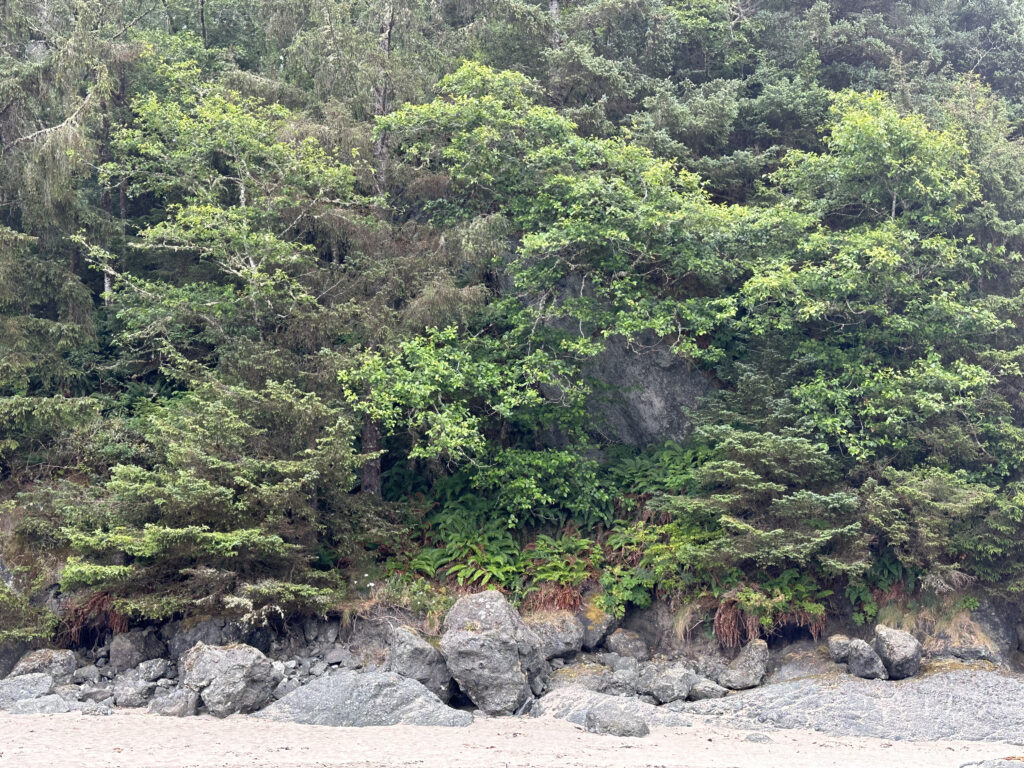
The forest is impenetrably thick. The salal grows six feet tall and - if you're not wearing pants - slices your shins apart. If there's no salal you're facing thick red alder growing amid the sitka.
You don't want to have to bushwhack here. We tried once and I think we went about 60 feet in 20 minutes. We abashedly retreated to the trail and worked our way further.
The Colors
Once that sun comes out you'll notice all the other colors. Not just the green of the trees and brown of the driftwood, but the vibrant colors that originate from the ocean.
The entire rainbow is there if you're willing to take the time to look on the seashore.
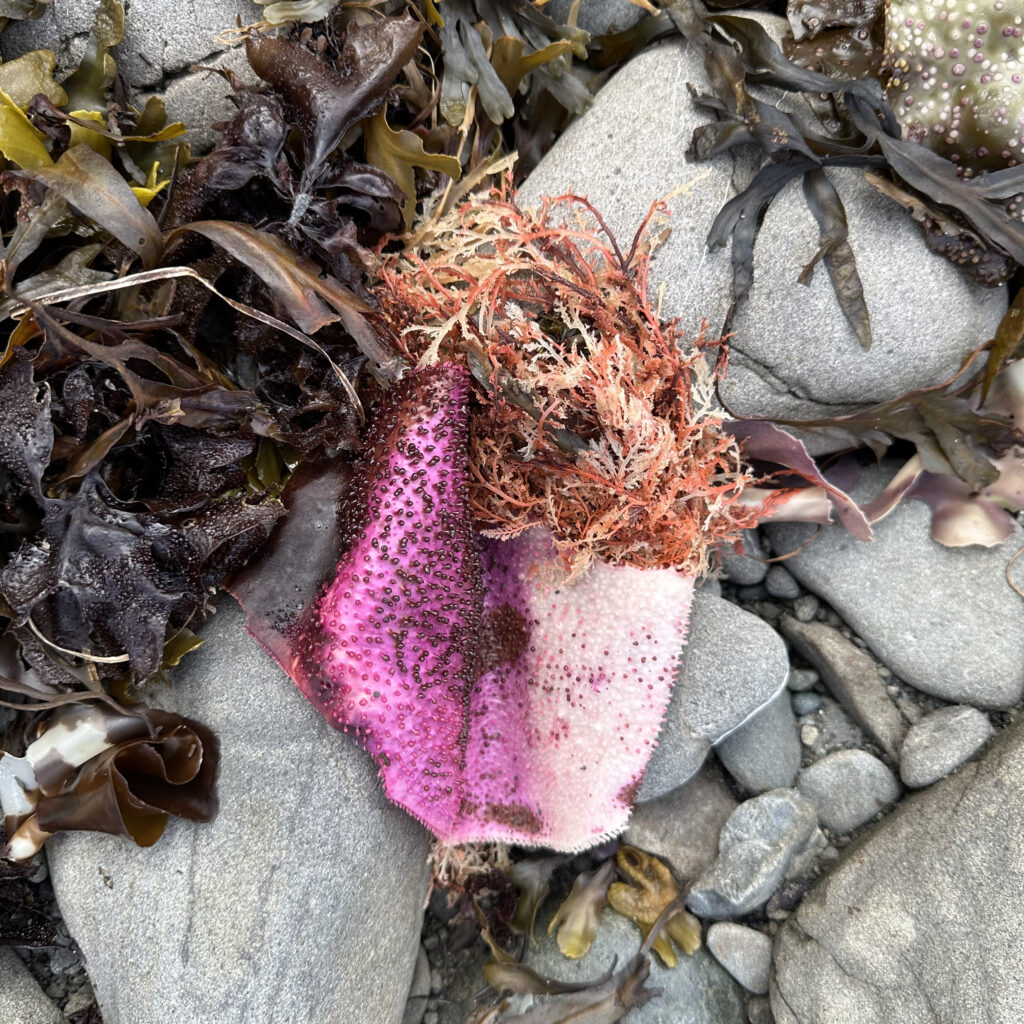
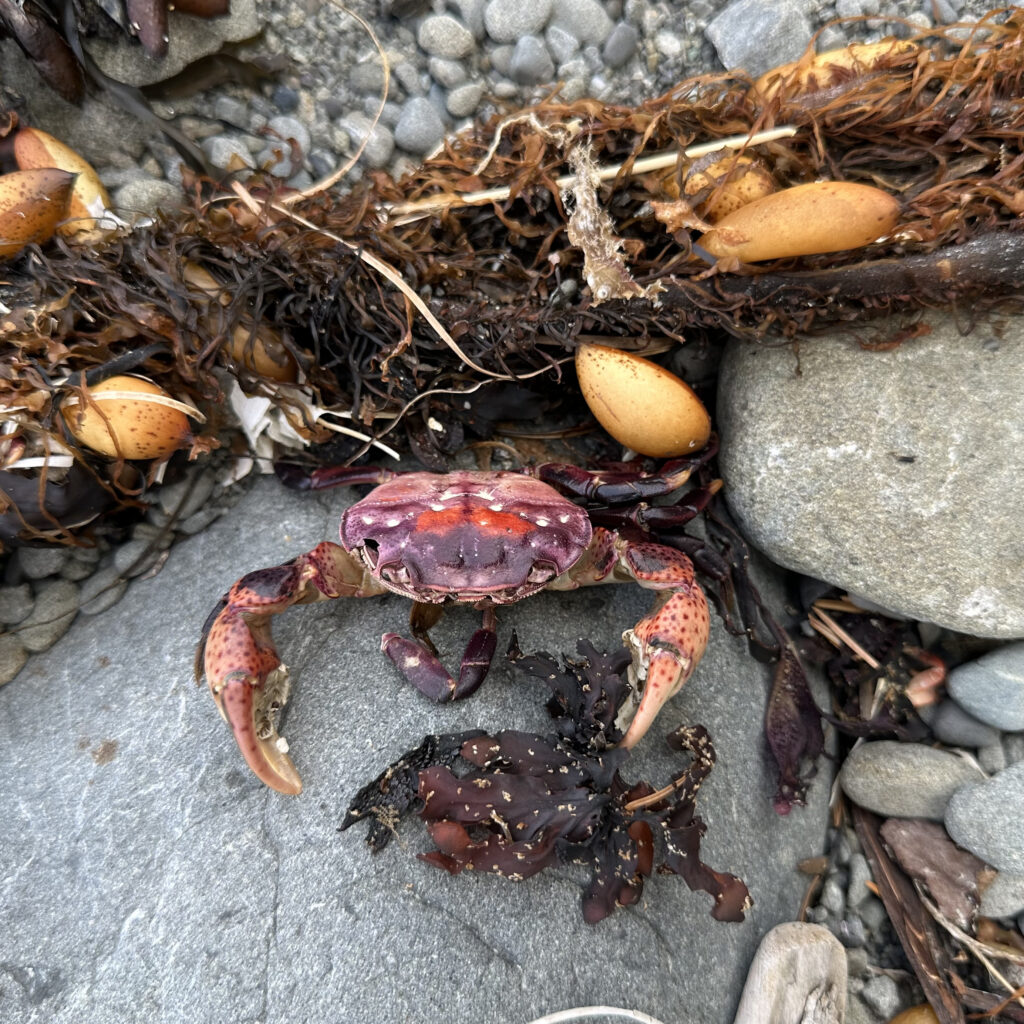
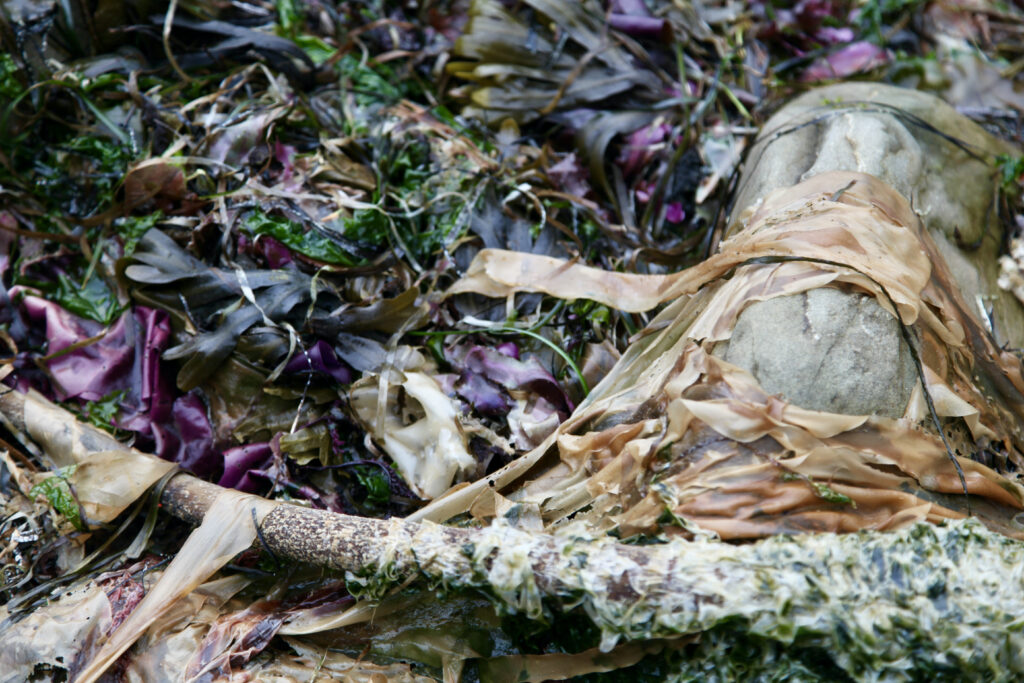
And while most of it is natural, there's also some man-made color.
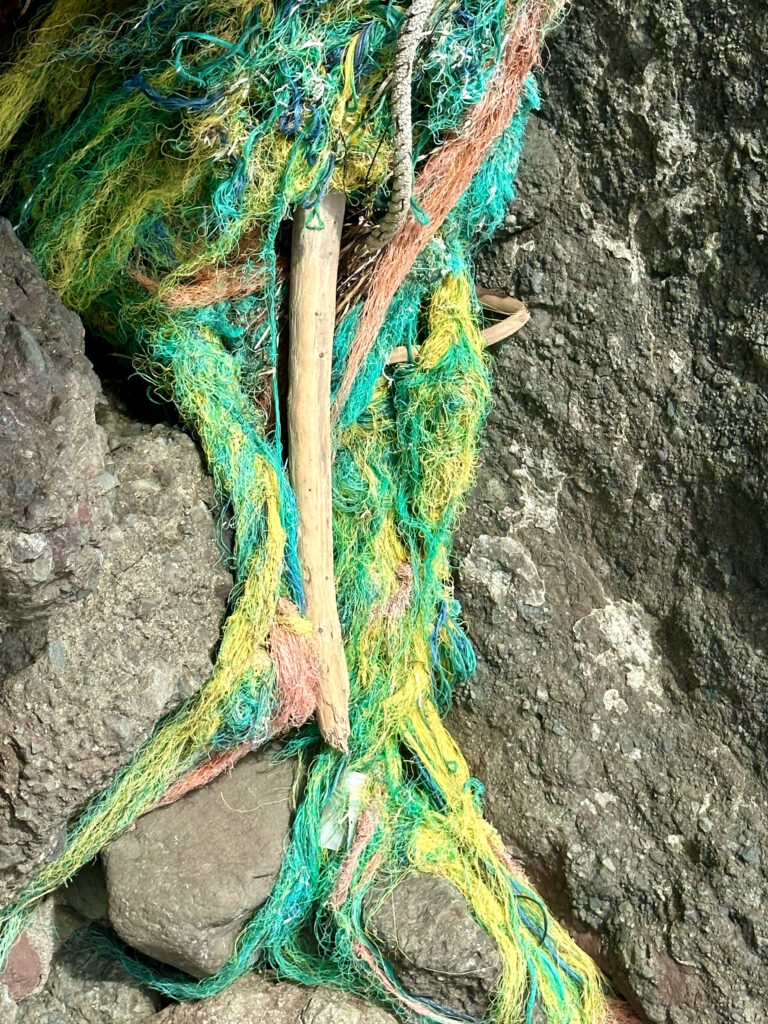
In fact, the Parks Service uses washed up buoys to mark campsites.
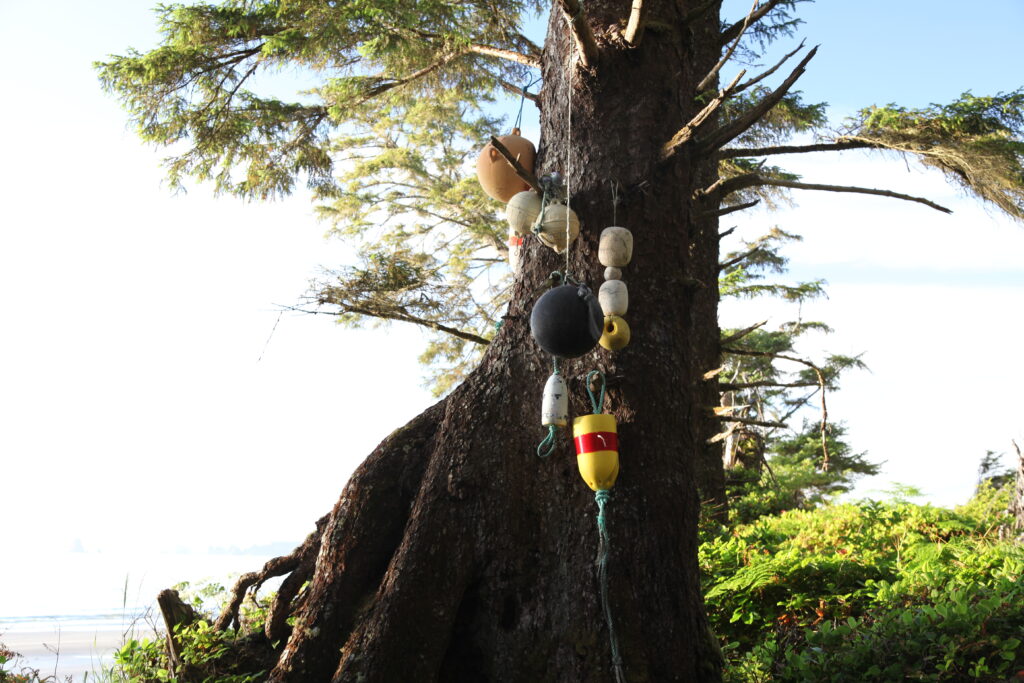
In some places, these hang from trees and can be used as 20' tall swings - more like a giant pendulum than a swing (I'm thinking of you, North Side Ozette River). My kids loved this.

The other source of color?
The elusive sunset.
The fog means that they can be rare, but when they happen, they paint the entire ocean red, orange and silver.
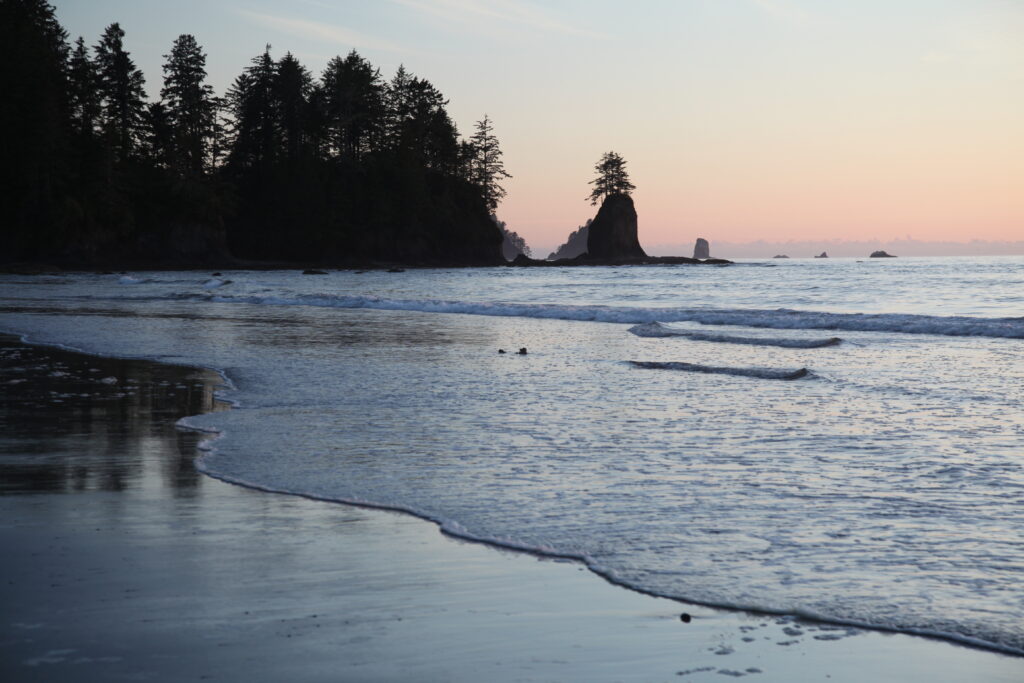
The Traces of the Past
No one lives in the park.
Actually, that might to be totally true. There are 3 buildings just south of Seafield Creek; these folks may have the best cottages in all of the Pacific Northwest.
There are some traces of former inhabitants. Cape Alava used to have a native village; it's abandoned now and whale bones occupy a memorial.
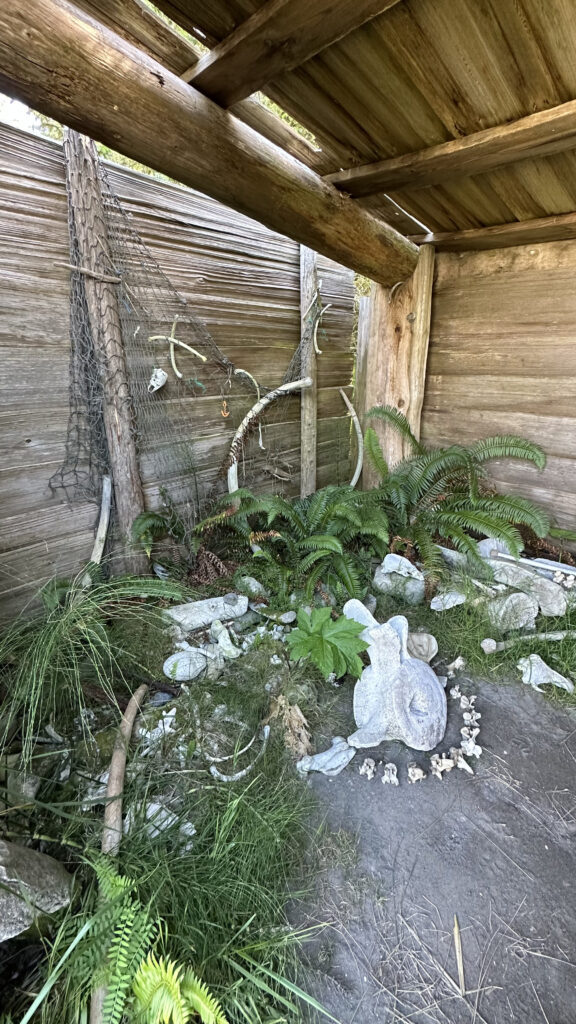
Further north you can find some old artillery observation posts from WWII. They're not marked on any current maps so you'll need to do some research to find them - and beware that the trails are unmaintained so you're on your own vs. the salal and windfall.
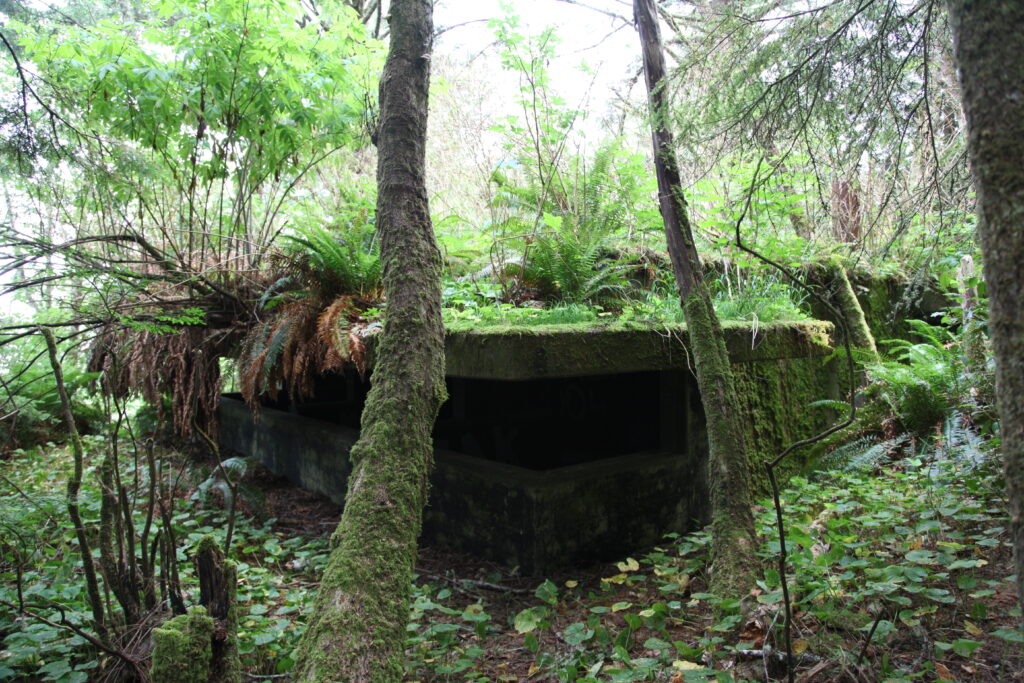
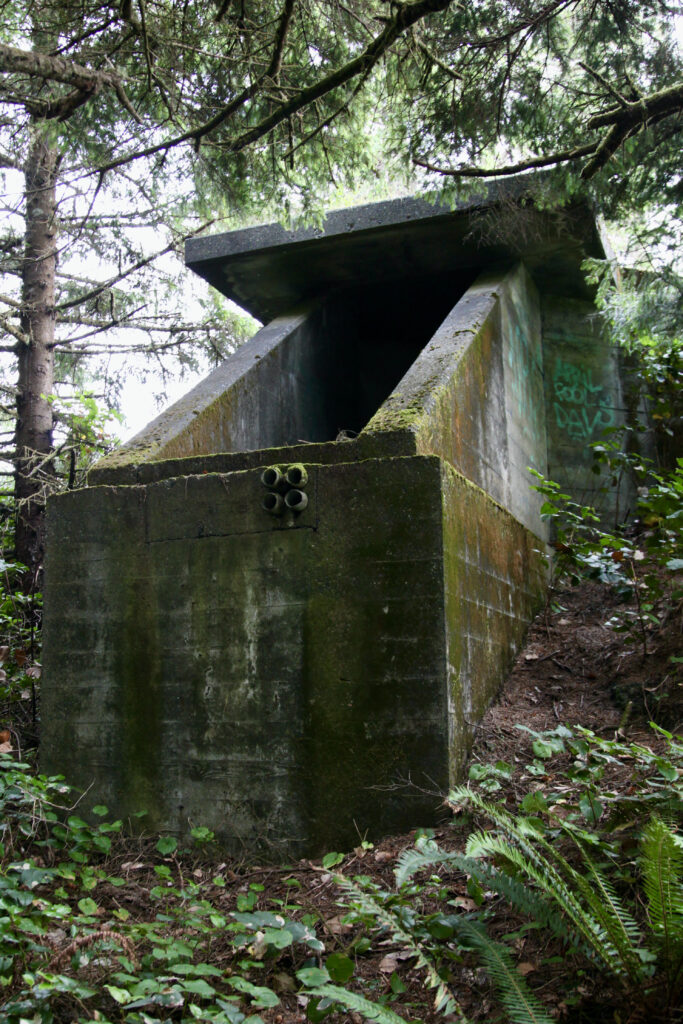

In retrospect, they were worth the walk, but it didn't necessarily feel that way at the time.
The Graveyard
The entire shore is a graveyard. It starts at the high water mark where old growth trees washed up as driftwood.
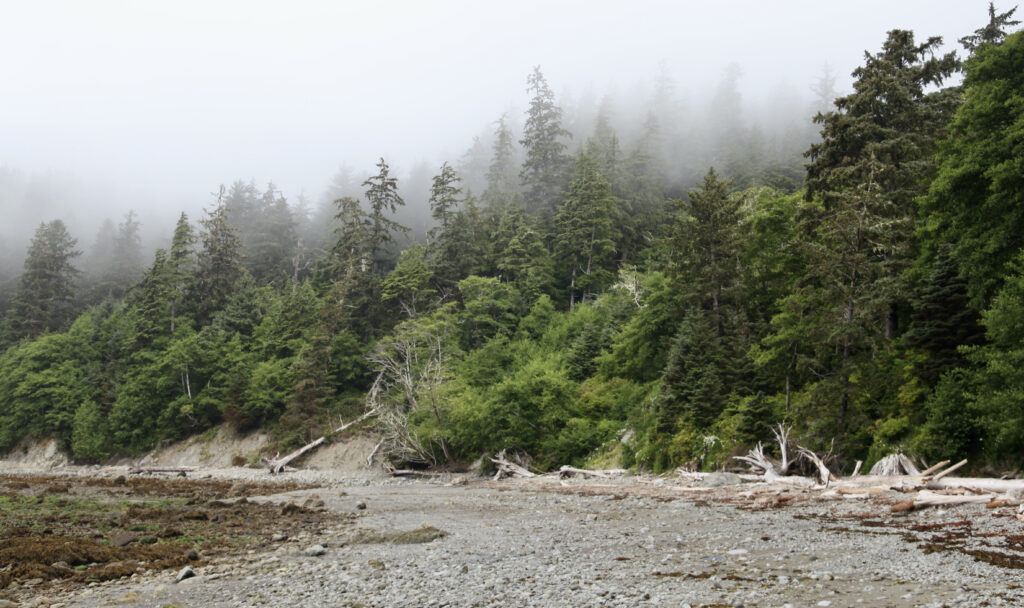
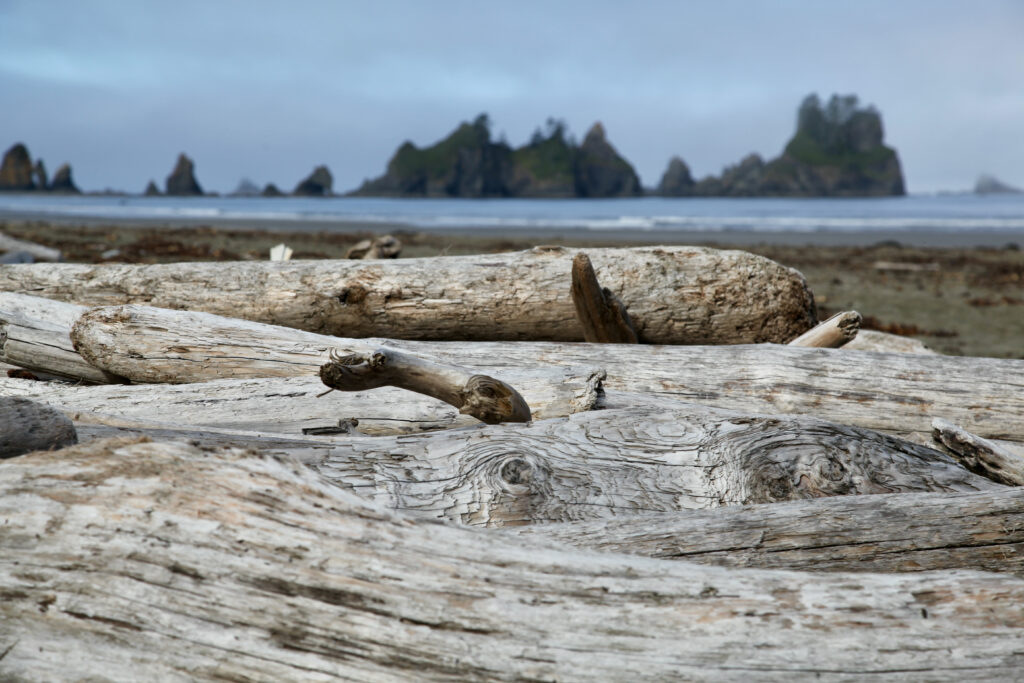
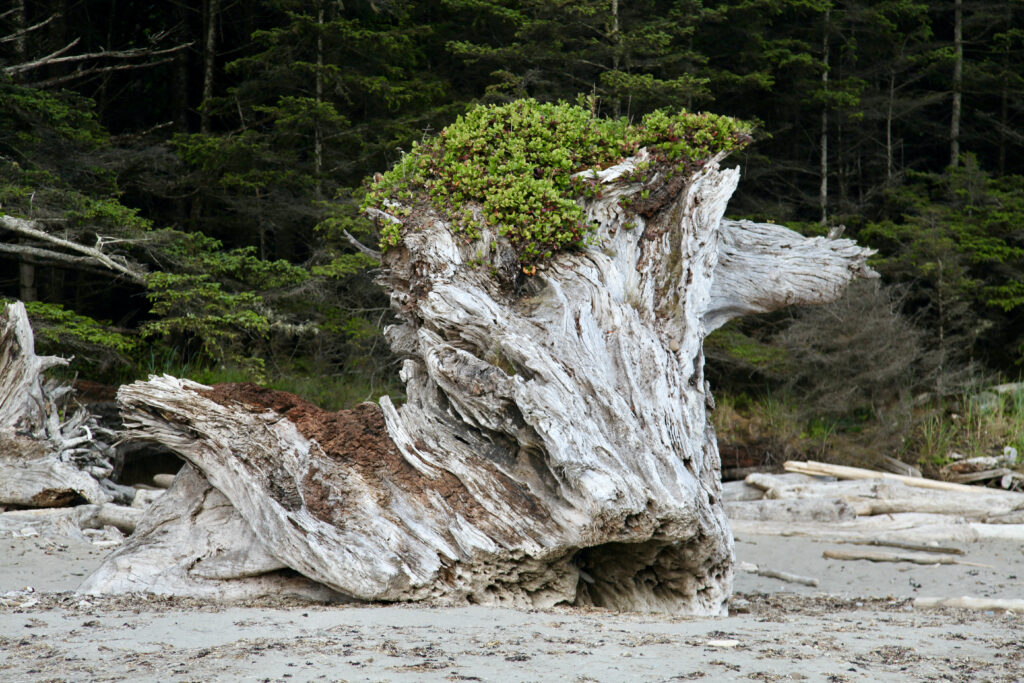
Some of these logs appear to be hundreds of years old and, as above, have years of growth on them.
Further down towards the surf comes the next layer of death.
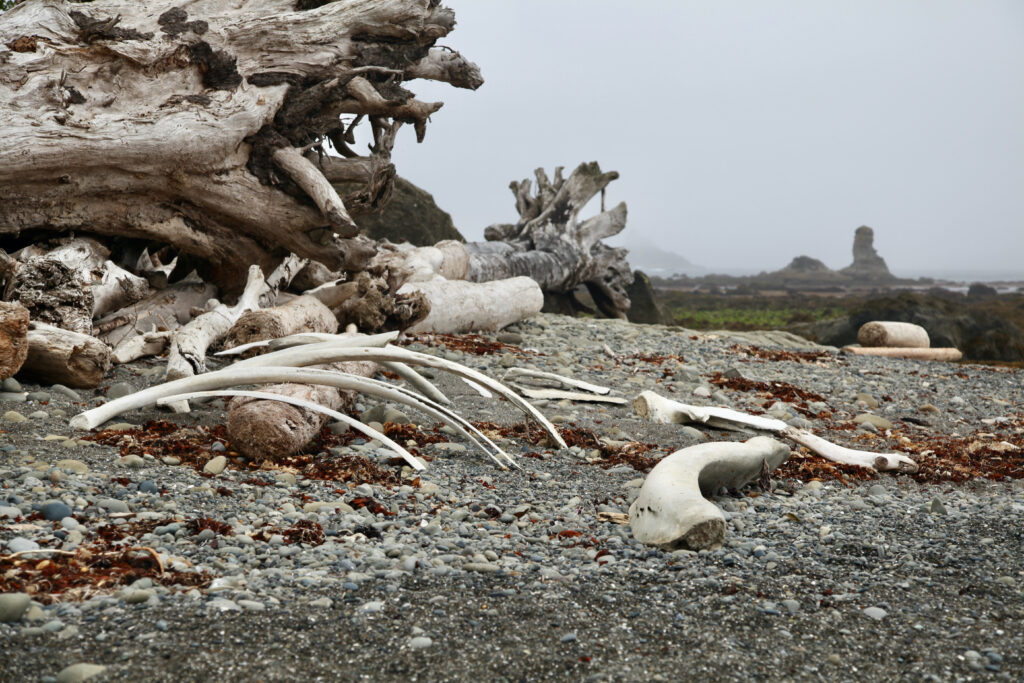
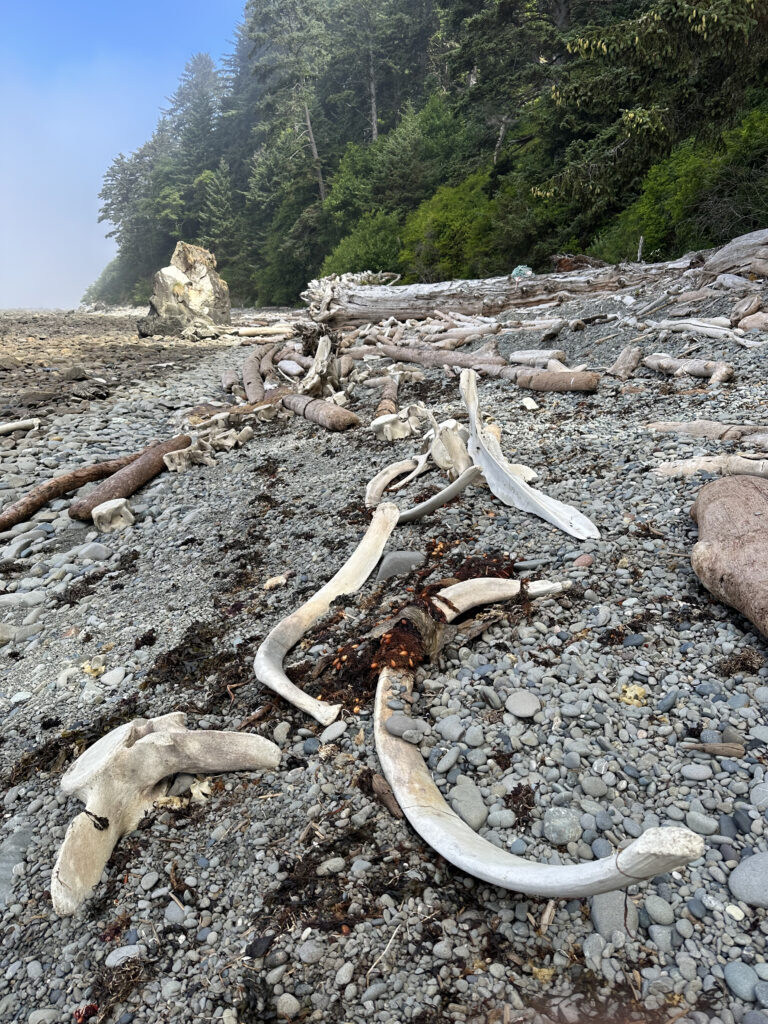
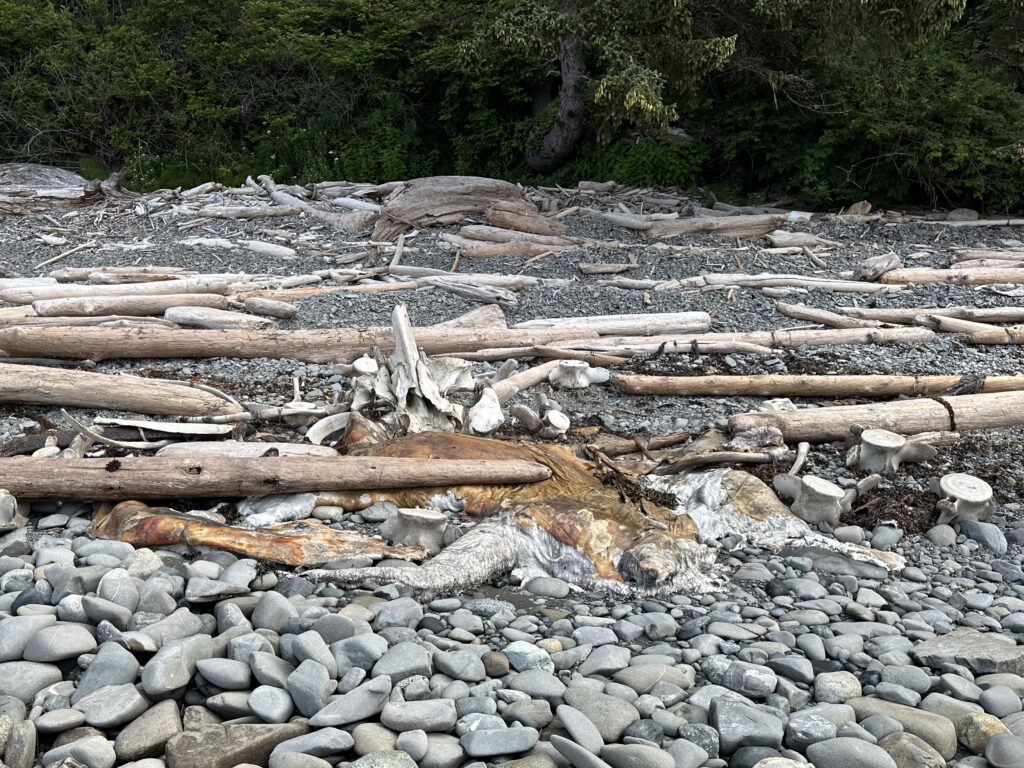
Whale bones can be found at multiple places along the hike. There's some organic material still attached to the bones above and you can smell the stench from a long way away.
Similarly, we came across an otter and possibly a seal.
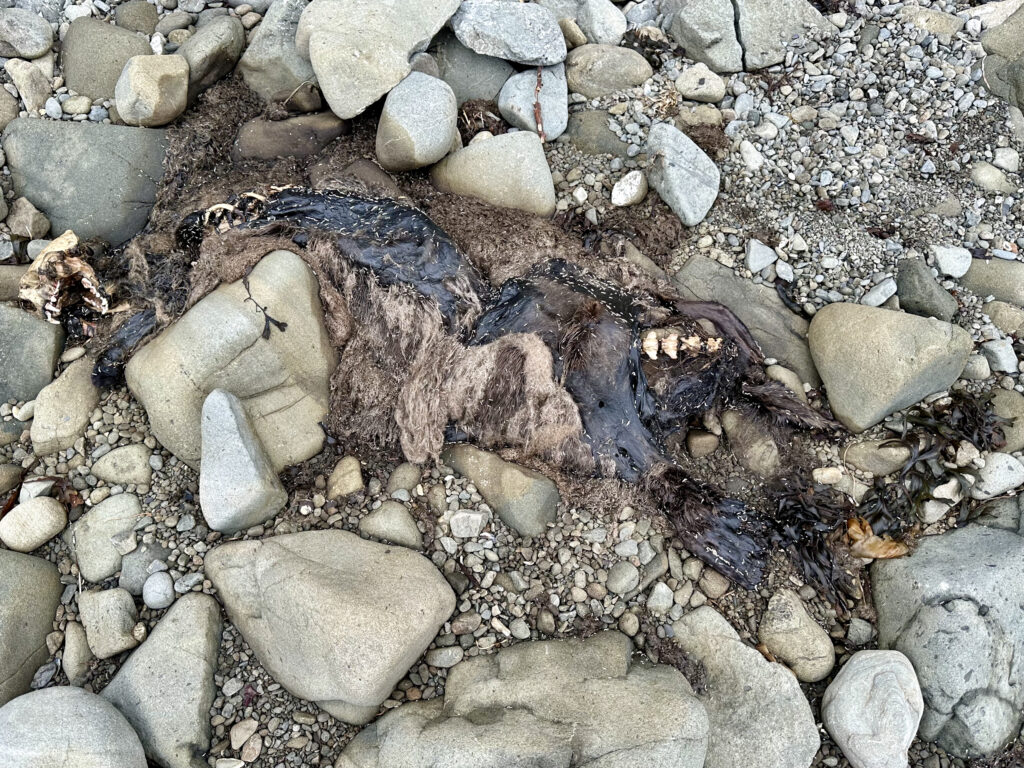
Every high tide the high water mark would be littered with dead shrimp and crabs; the site of a twice-daily recurring massacre.
The Wildlife
While the beach is a graveyard, the overall sensation you have is that the entire coast is alive and the beach is the exception to the rule. Animals abound in the park in the air, in the water and on the land.
Birds are everywhere. Eagles fly overhead and take up roost high in the trees or on top of craggy rocks (and they're frequently paired: if you see one, another is usually nearby). Bluejays, robins, auklets, crows, pileated woodpeckers, seagulls, sandpipers and pelicans are all to be seen - sometimes in flocks of upwards of a hundred.
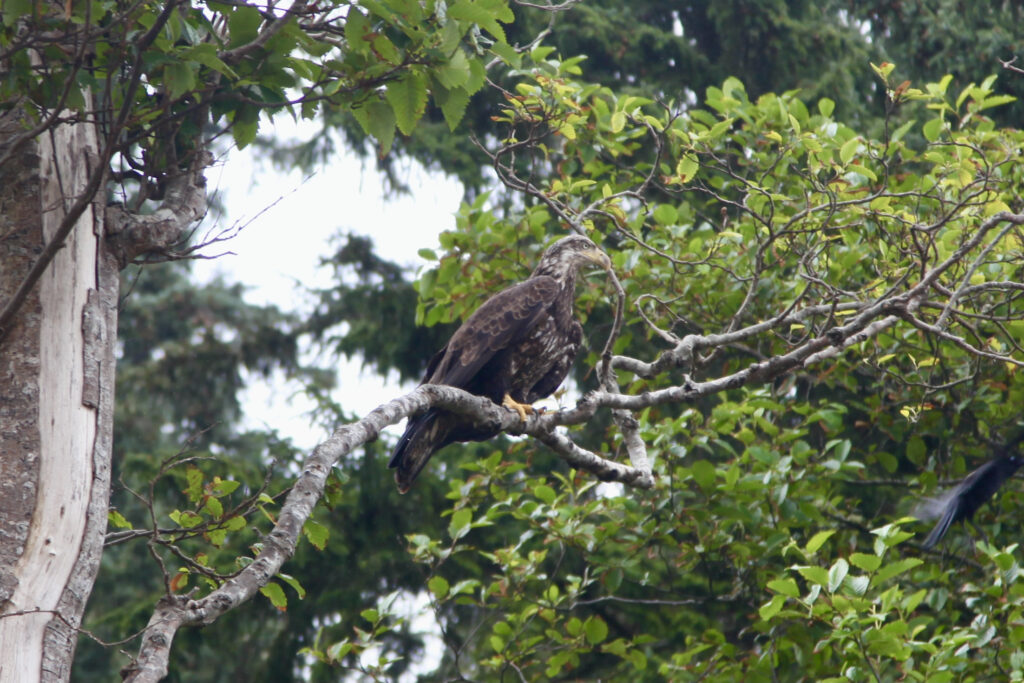
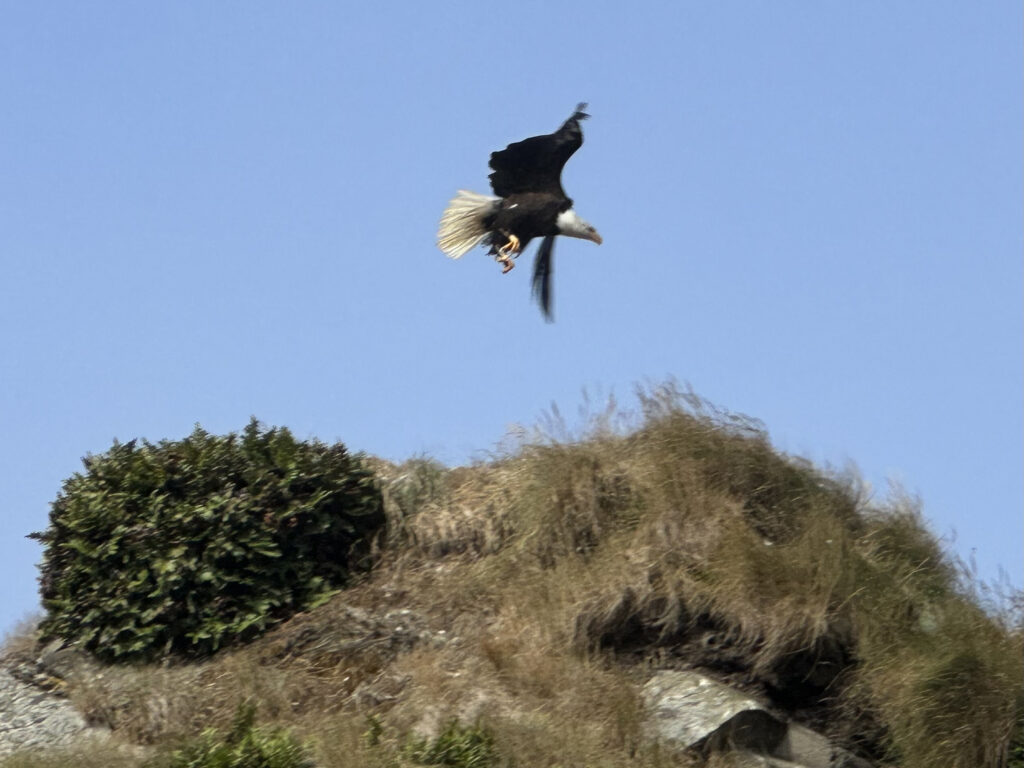
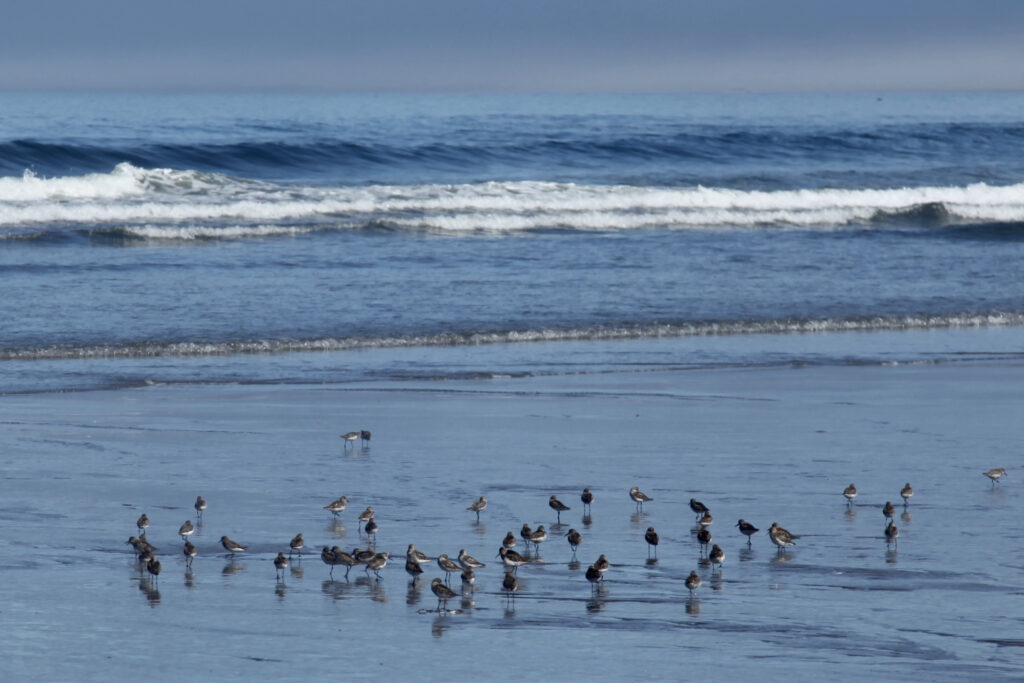
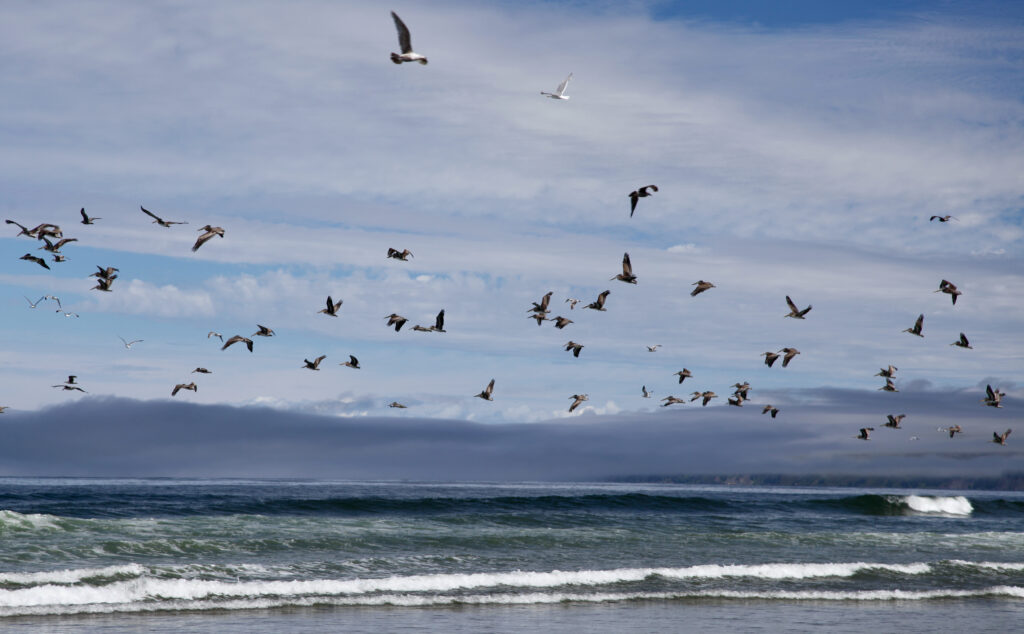

In the sea you'll find seals and otters. At Sandpoint we saw 50 otters rafting together as they moved through far off kelp beds. At Norwegian Memorial 20 plus seals sunned themselves on a rock and played in the tide. At Cape Alava we could hear seals barking somewhere out in the fog.
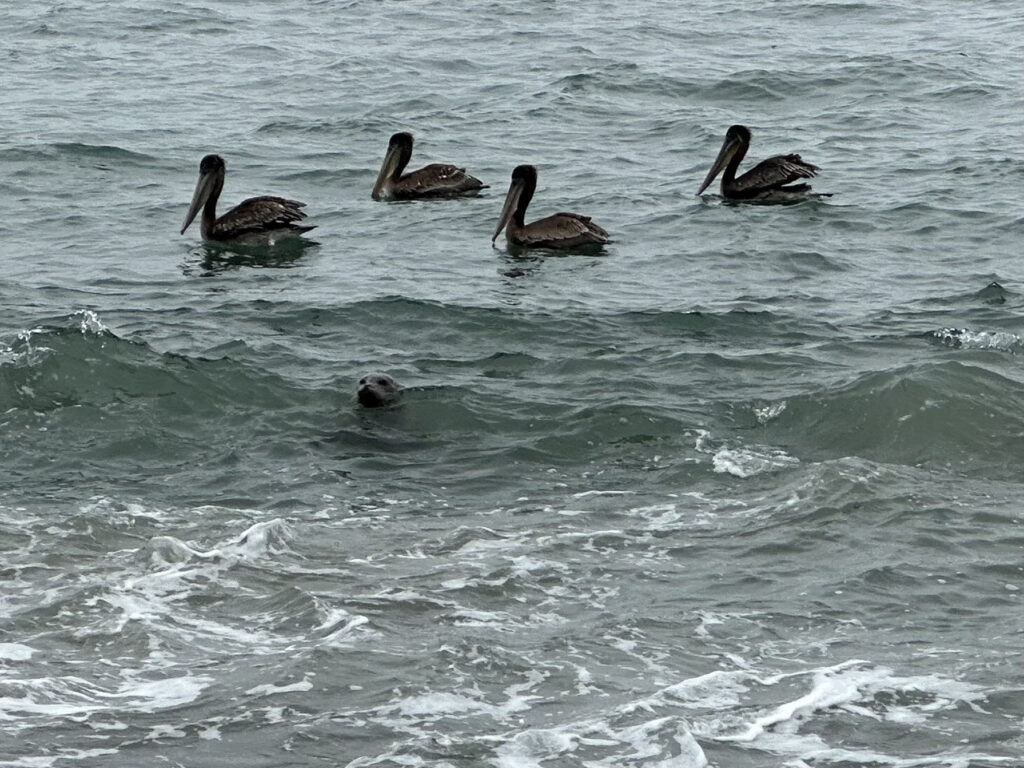
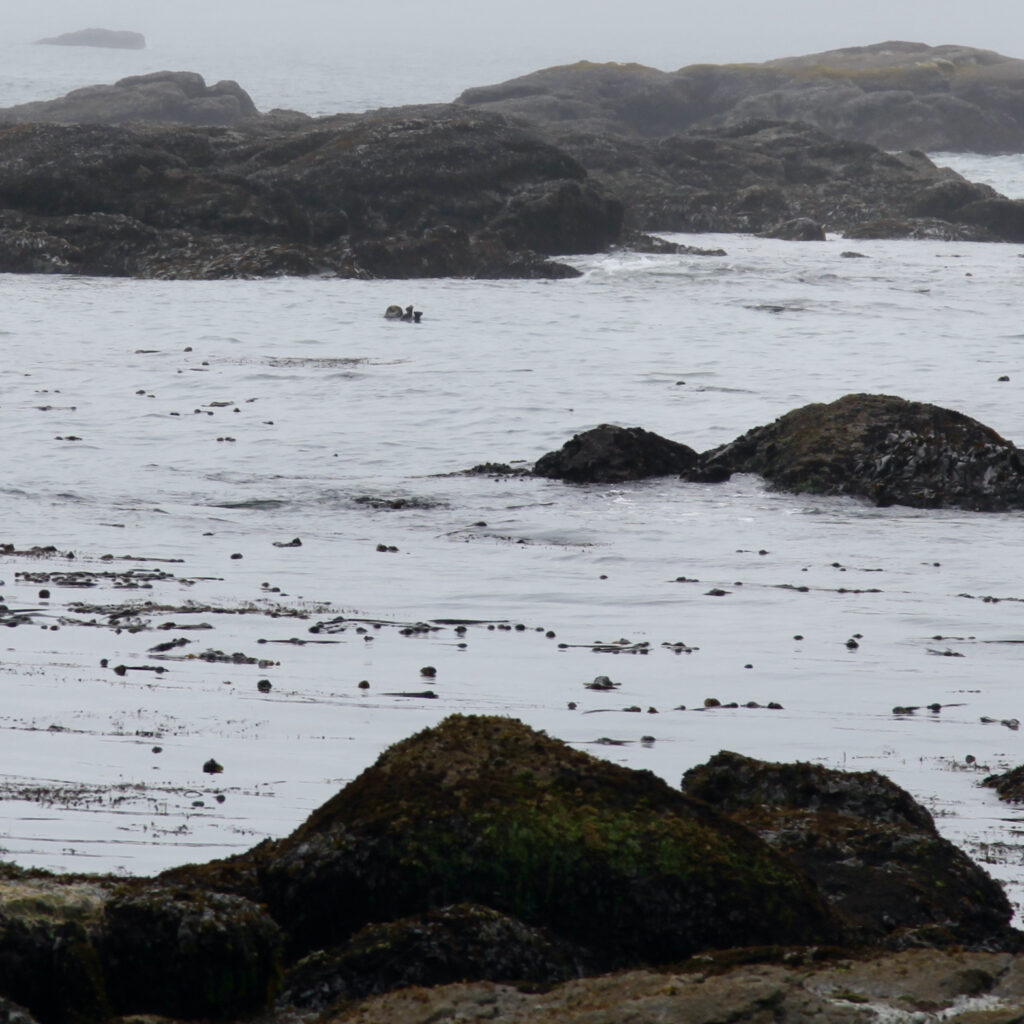
The sea is also home to colorful tide pools filled with many types of anemones and both orange and purple sea stars.
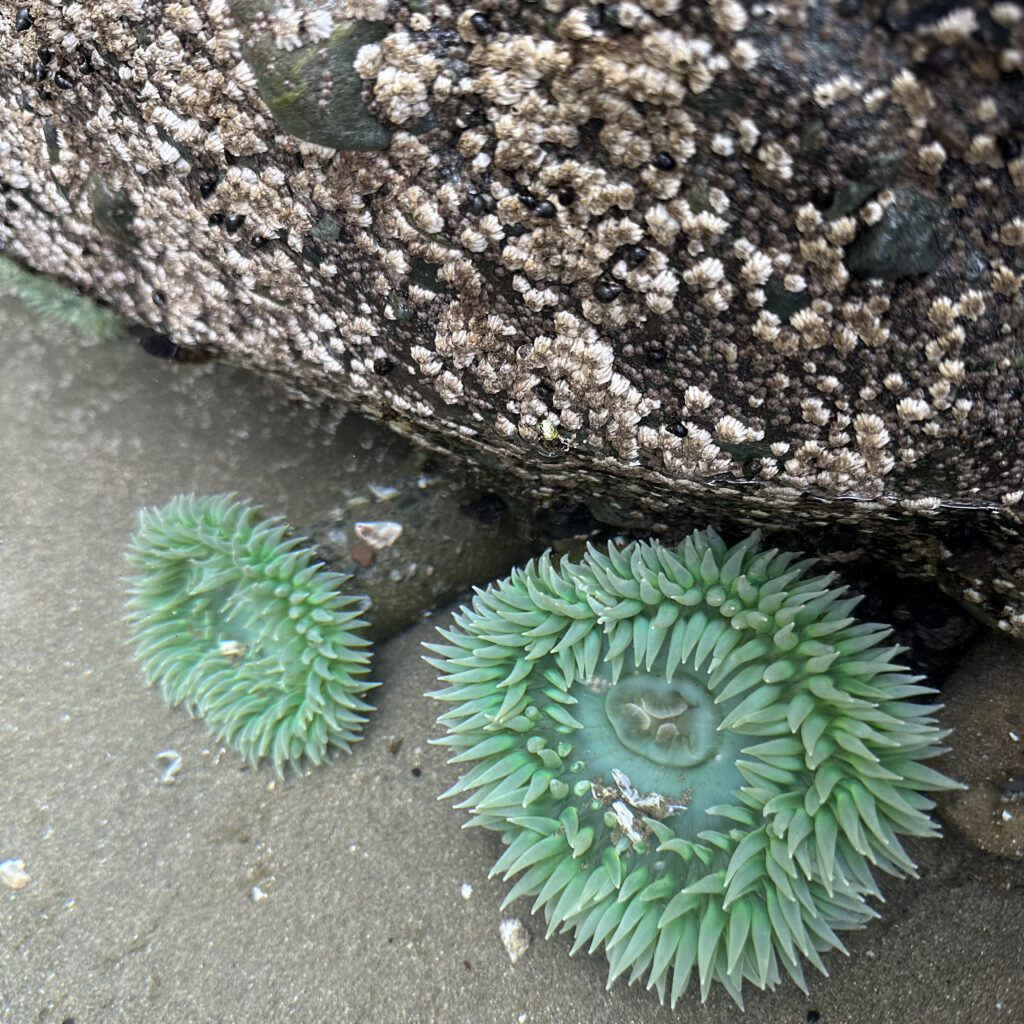
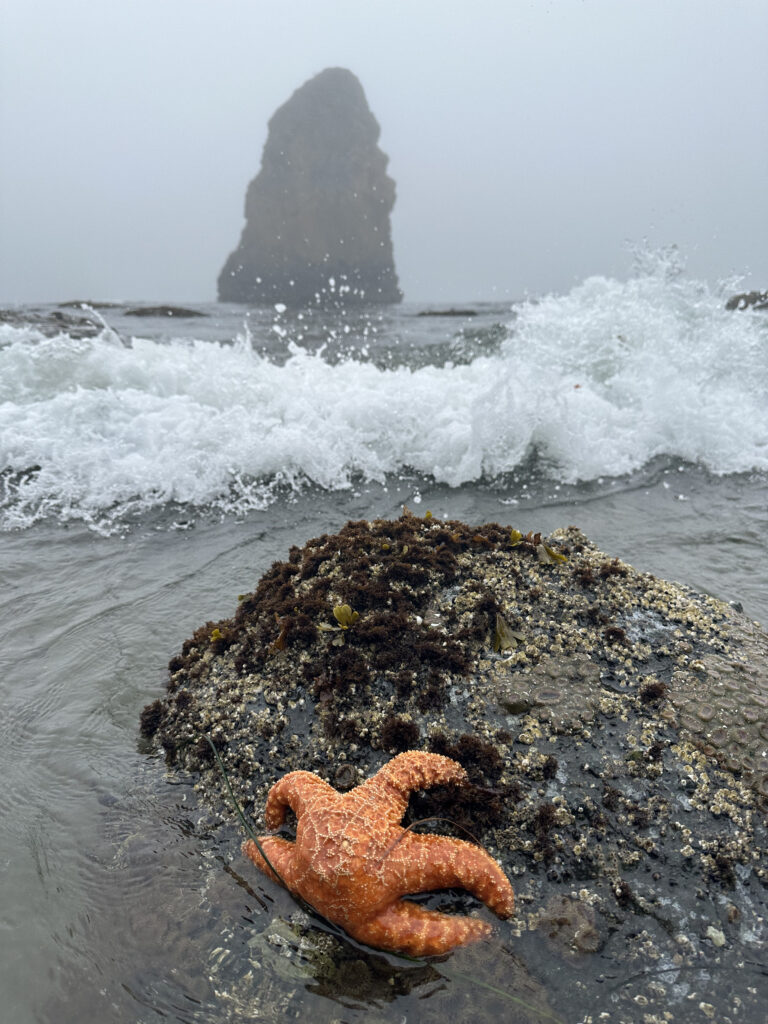
There are also fish there - although they're hard to see. The only place I saw them was in the bay just past Point of the Arches at Shi Shi Beach. In fact, I'd brought my swim goggles because I'd been there years ago and fantasized about swimming there: if I could see underwater would I see vast pools of anemones and starfish?
So I brought my goggles and it turns out that while the visibility was great, all you could see was kelp and the odd grey fish. And the price of this was near hypothermia; my whole body felt like it was on fire and my face felt like it was being beaten every time I tried to look underwater. Fortunately I was only there for a few minutes plus it was shallow so my body didn't shut down. But that's the only part of the trip I can't really recommend.
The beach proper is also home to animals. Crabs are everywhere and leave trails behind them as they move sideways along the beach.
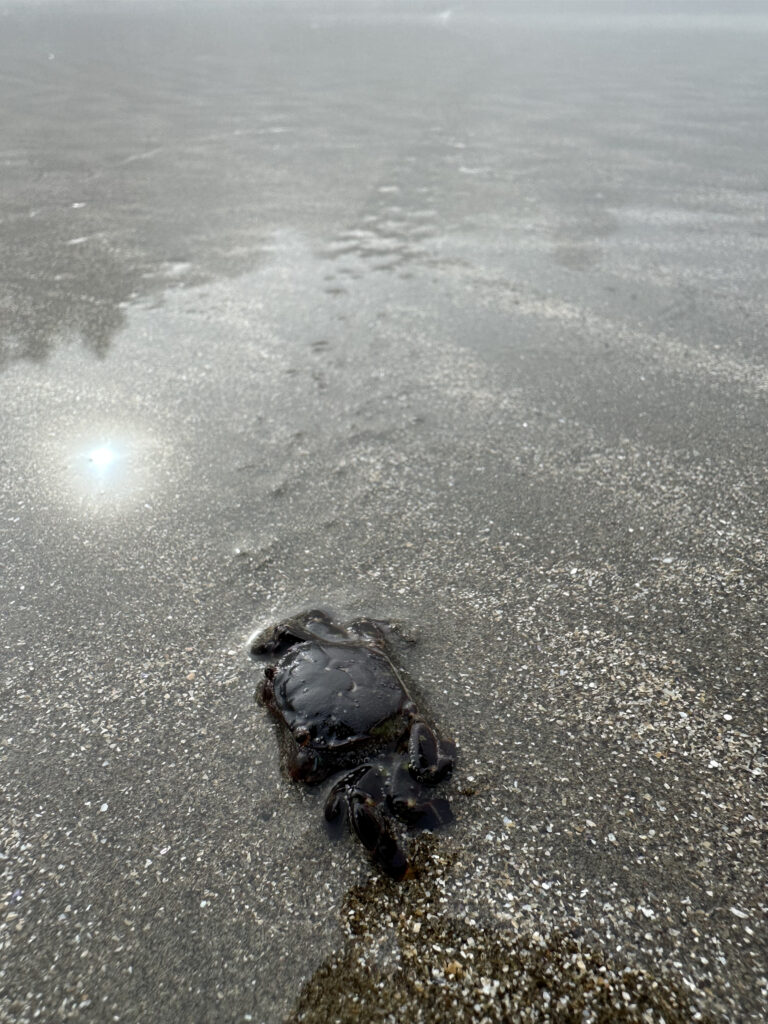
The crabs are actually fascinating. I was the first person to round the rocks of Cape Johnson at low tide and there were literally thousands of crabs skittering out of my way. It sounded like rain as the tiny crabs would flee my presence, literally dropping a hundred times there height to get away from me (and with no consequence to their health! These are 2 dimensional animals!).
One curious animal that I didn't get a photo of but we had great fun with was the sand/mole crab. These burrow in the swash at Shi Shi beach near the Arches and you can quickly dig down and pick them up.
The land animals are not limited to crabs. We saw several velvet elks and the highlight may have been being on the beach at the same time as a juvenile bear (fortunately not a cub).
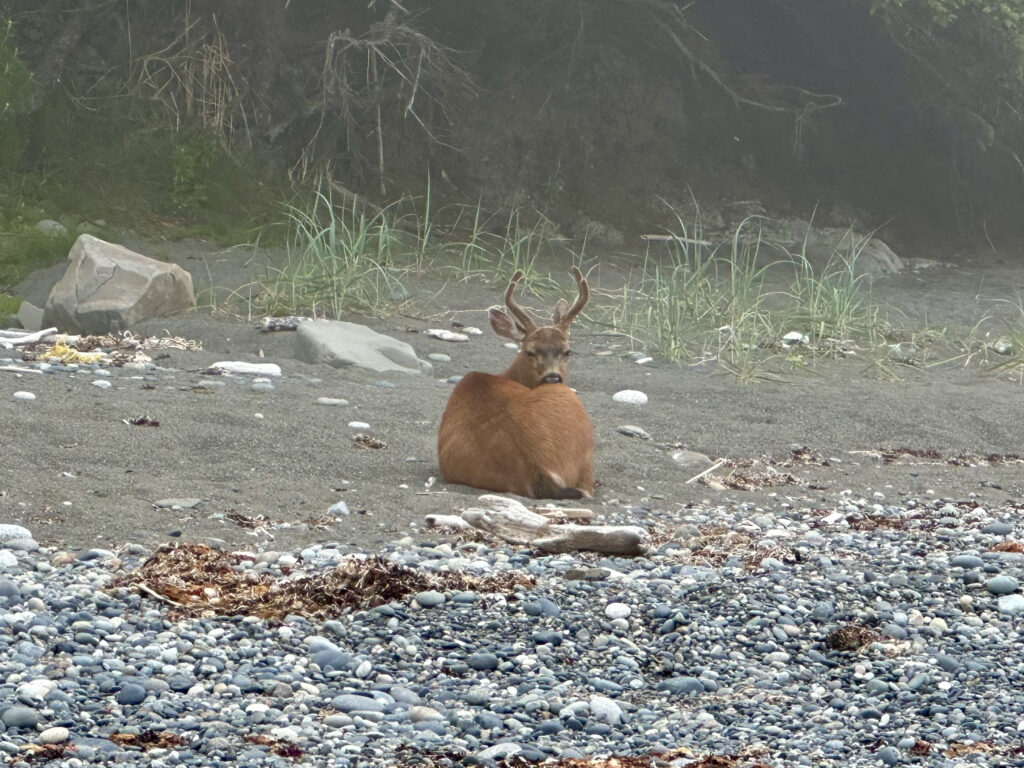

Random Trip Notes
It is cold along the Pacific. I think the PNW is one of the few places where you can get a sunburn and hypothermia at the same time. Bring at least a puffy jacket.
The beaches here are very flat so the tide comes in fast as it doesn't need to climb far. You can literally stand in tide pools and watch the ocean creep towards you.
Water is a surprising concern. Several of the campsites we were at had only brackish water and even after filtering it wasn't clear. Fortunately it was clean and no one got sick.
The patch between Shi Shi Beach and the Ozette River was the wildest part of the trip; we only saw two people that day and felt truly alone. The next emptiest patch was between South Sandpoint and Norwegian Memorial - however, there were fighter planes from NAS Whidbey overhead making roaring noises and crazy contrails, so we didn't feel remote from humans.